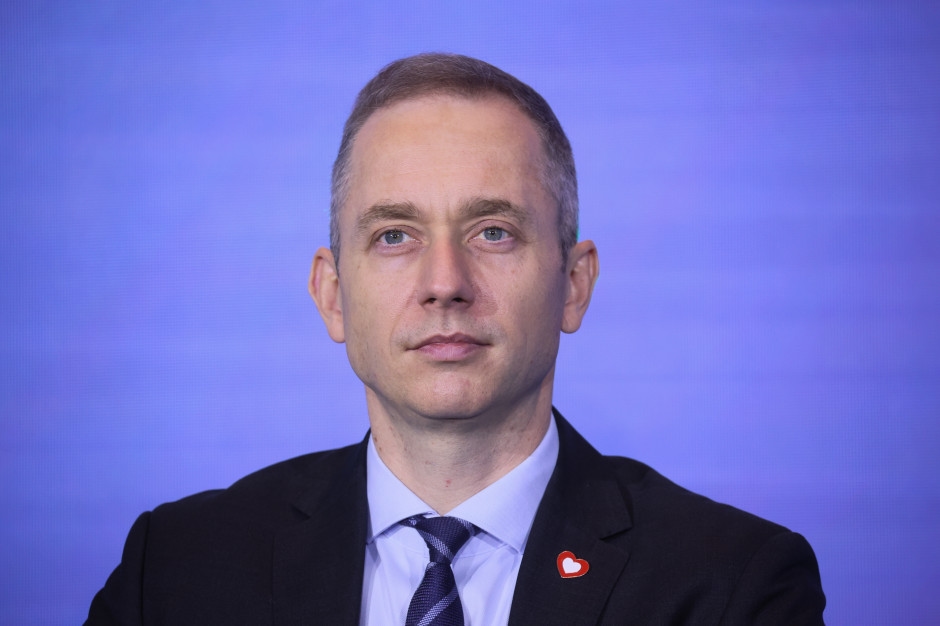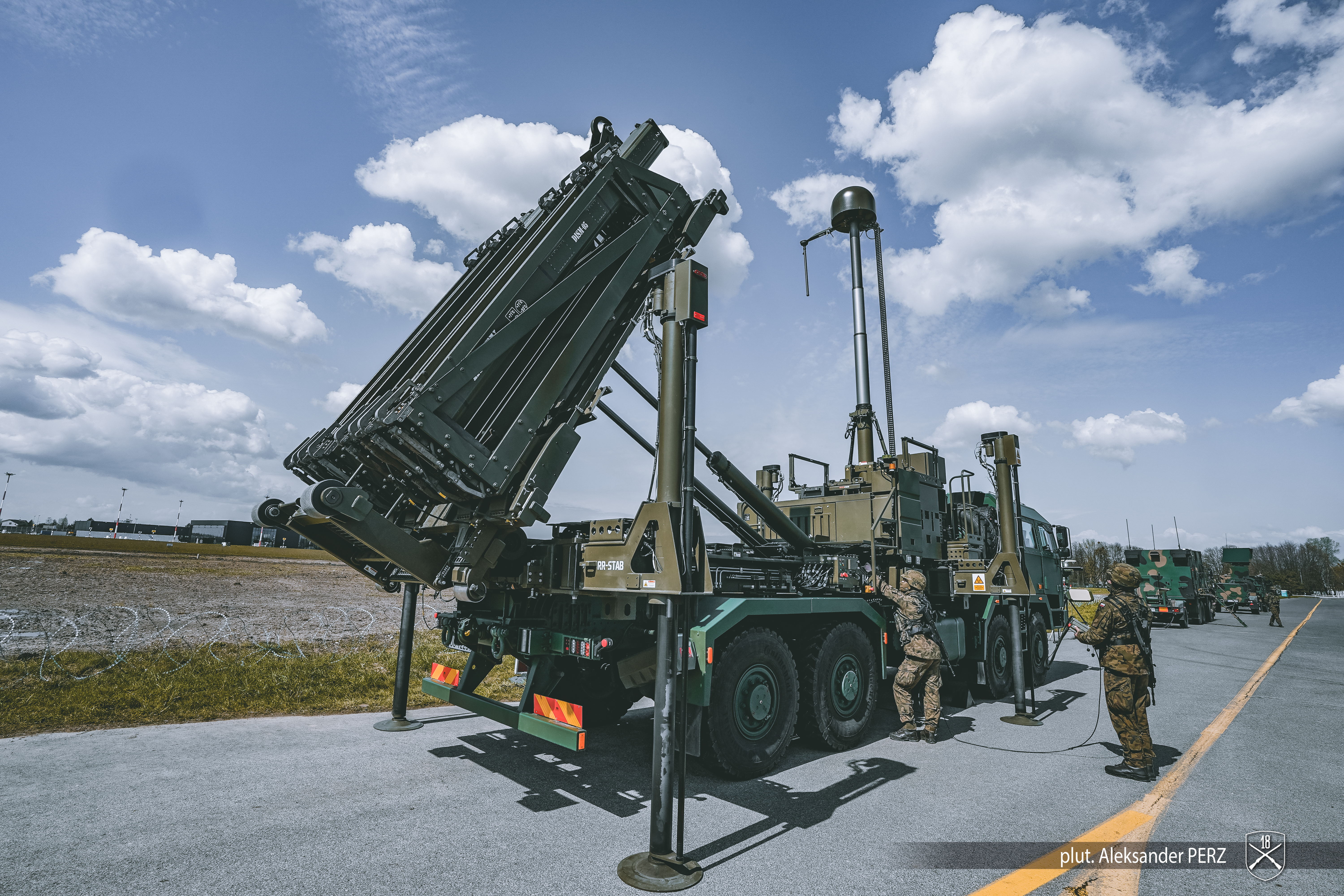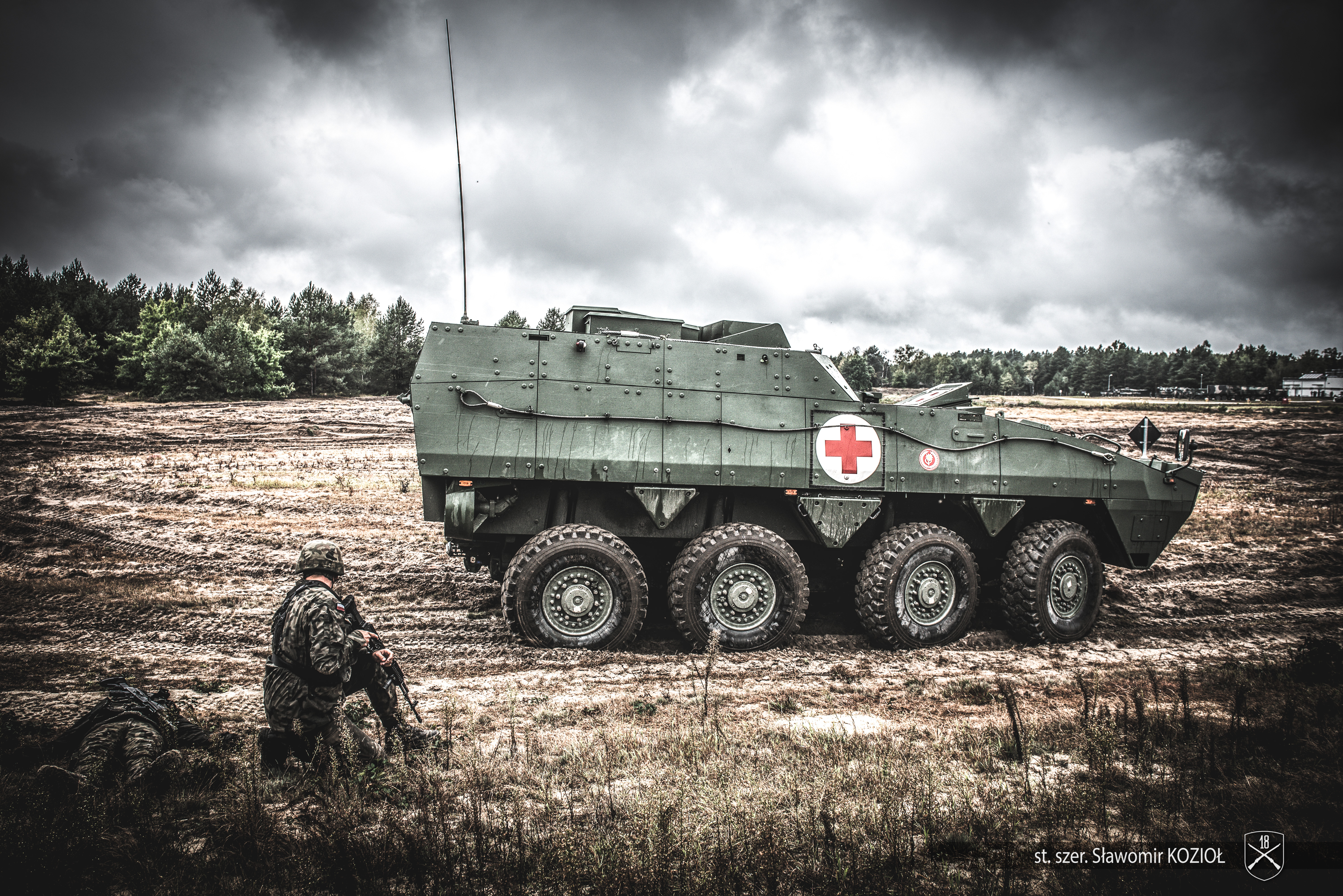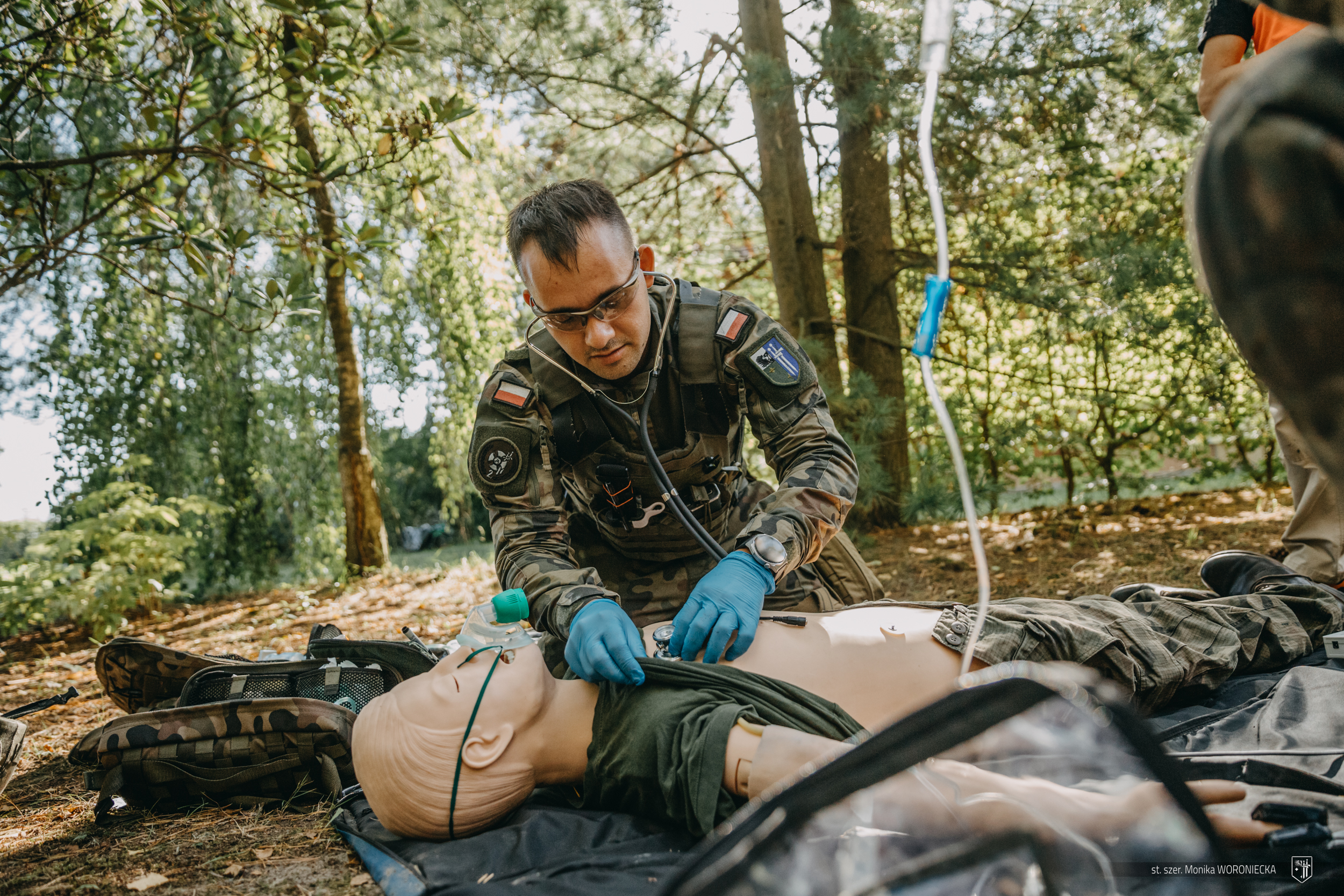How will healthcare work if war breaks out? Tomczyk: A fiction many people live in.

- In November, the Minister of Defense is expected to announce a drone defense program. Deputy Minister Cezary Tomczyk assured that the program will include "kinetic effectors," jamming, electromagnetic solutions, and reconnaissance systems.
- The politician also comments on Ursula von der Leyen's announcement about the creation of a European drone wall: - The idea itself - although interesting and correct - does not provide specific tools at the moment.
- Tomczyk also reveals details of the agreement signed by the Ministry of National Defense with the American company Palantir. "Everyone wants to have Poland in their portfolio," he tells the WNP portal.
- He also declares that the Chancellery of the Prime Minister is working on a strategy to combat disinformation.
- The deputy minister would like Poland to acquire its first telecommunications satellite by 2030. This purchase is to be included in the list of programs financed by the EU's preferential defense lending program, known as SAFE.
Should we be more afraid of Russian drones at this point, or of Polish ones, which are being dropped as part of tests? At the end of October, a drone from Military Aviation Works No. 2 in Bydgoszcz crashed onto parked cars in Inowrocław.
"That's a misguided comparison. Firstly, there's a war going on beyond our eastern border – a real threat to Poland. Secondly, we currently have a large army and intensive equipment testing: approximately 60,000 soldiers train in Poland every day. With such a scale of exercises and tests, incidents do happen – they can't be ignored, but they must be distinguished from threats arising from enemy actions."
Are you just saying that accidents will happen?
We're testing weapons—this isn't scouting. However, we must minimize risk and learn from each incident. Let's build social resilience in this area as well.
Drone protection program launches in November. First results since FebruaryThe Ministry of National Defense (MON) is announcing major investments in drone defense; such promises are made every few weeks. We'd appreciate specifics.
"In November, we will announce a new, comprehensive program for protection against unmanned weapon systems—the largest in Europe, excluding Ukraine. We have been working on it for months: researching the market and consulting with domestic industry. To this end , we have established the Unmanned Weapon Systems Inspectorate ."
We've also adjusted the law: the smallest drones are no longer treated as aircraft, but are now classified as everyday equipment – this makes them easier to neutralize and streamlines military training. We've amended public procurement law to ensure the project's smooth implementation. We'll provide details once the final work is completed.
So, announcements again.
- We are modernizing the army step by step and in the coming months we will announce further contracts.
Will these be drone or anti-drone programs?
We are building a multi-layered security system. Today, Poland has anti-missile and anti-aircraft defense systems—Wisła, Narew, Pilica, and Pilica Plus—responsible for neutralizing the most complex and dangerous air threats.

The conclusions from Ukraine are clear: we need to supplement defense from below, meaning we need to build a layer dedicated primarily to drones and very small unmanned threats. There's no "drones or counter-drones" option here. We're creating a comprehensive, complementary system. We're doing this in a way that hasn't been done before in Europe .
Will it be shooting down drones or jamming? Or both?
"There's no single tool that will solve all problems. Large systems—for example, Shahed-type unmanned aerial vehicles—are shot down—they're not disrupted because it simply doesn't work. The smallest drones can be disrupted, but only if they're not connected by wire, for example, via fiber optics. That's why we're building a system that uses several effectors simultaneously: from classic kinetic effectors, through jamming, to electromagnetic solutions and reconnaissance systems. These are the dimensions we think in—comprehensive, multi-layered, and modern. This is the direction we're pursuing."
How does this project correspond to Ursula von der Leyen's announcement of the construction of a "drone wall" on the eastern border of the European Union?
"Regarding the idea, we're certainly in favor. Currently, the real tools are the Ministry of National Defense budget, the Armed Forces Support Fund, the SAFE program, and NATO operations, including Operation Eastern Sentry. These are the instruments that allow us to build defense capabilities here and now. The idea of a European drone wall—while interesting and valid—doesn't provide concrete tools at this time. We're waiting for those tools."
So the announcement from the State of the European Union speech was not followed up by any specifics?
- SAFE is a concrete EU measure with enormous potential . Let's treat these instruments together.
How long will the project announced by Defence Minister Władysław Kosiniak-Kamysz be valid for?
"The solutions will be implemented successively over a 3-, 6-, 12-, and 24-month period. This means that the first operational capabilities will be available after just three months. We intend to complete the entire program within two years. This is a very ambitious plan."
How true are the rumors that there will be cooperation with the Ukrainian side on the project?
"We cooperate with the Ukrainian side in many areas. I can't disclose everything publicly, but it's important that allied support and information exchange translate into practical benefits in building our capabilities. Furthermore, as part of Operation Eastern Sentry, we are receiving various solutions and equipment from allies. We also have advanced forms of cooperation with the American side, which I can't discuss further at this time, but they will also influence the implementation of our defense capability development plan."
In summary: we are building a system unlike any other in Europe. If we add the Wisła, Narew, Pilica, and Pilica Plus programs to this mix, in 3-5 years we will have a complete, state-of-the-art missile, air, and drone defense system in Europe.
Who will fight Russian disinformation? Ministry of National Defense "only in the military sphere"When will Poland have a strategy for fighting hybrid warfare, including the fight against disinformation?
Work on the strategy for countering hybrid threats—including tools to combat disinformation—is being conducted in an inter-ministerial format. The Chancellery of the Prime Minister coordinates the work in cooperation with the Ministry of Digital Affairs, the Ministry of Interior and Administration, and with the participation of the Ministry of National Defense where the strategy addresses defense and counterintelligence aspects. The Ministry of National Defense is particularly focused on counterintelligence components and the protection of critical systems.

So the Ministry of National Defense will take a more active role in the sphere of information warfare?
- Only in the military sphere.
Meaning?
The easiest way to illustrate this is with an analogy to cybersecurity. Poland has various CSIRT teams—specialized incident response units. The Ministry of National Defense's CSIRT is responsible for cybersecurity in national defense, the armed forces, and military infrastructure. The same will apply to information warfare.
Our activities focus on threats directed against the military and attempts to interfere with the country's defense capabilities. We do not replace institutions responsible for combating disinformation in the civilian sphere – we cooperate with them, but we operate within our clearly defined area of responsibility.
Minister Kosiniak-Kamysz announced the signing of a cooperation agreement with Palantir. What exactly will it cover?
- For now, this is an opening of possibilities for cooperation and checking what solutions we can consider together if a real need arises.
Not every open letter signing involves a CEO from California coming to Poland.
"No, but today everyone wants to have Poland in their portfolio and show that they cooperate with the Polish defense sector. Ambassadors from all over the world come to us with offers from new companies. We are open, but cooperation must be on our terms. Polish industry is our priority."
The principle is simple: if a certain capability can't be achieved in Poland, we look to foreign partners. To achieve this sensibly, we sign letters of intent and agreements with confidentiality clauses – these grant us access to technologies that we can test and only then decide what should actually appear on the Polish market.
Palantir is now a global leader in battlefield management and the development of various databases. It's also worth noting that the NATO headquarters in Brunssum has switched to the Maven system, a Palantir derivative. It's hard not to notice such a partner and consider what we can do together.
Not everyone needs to know, so let's remind everyone that Allied Joint Force Command Brunssum is one of three NATO commands at the operational level and is responsible for the part of Europe that includes Poland. We also want to ask what the future plan is for the development of the Cyber Defense Forces?
"We are proud of them and will continue to invest in them. I hope that DK WOC will be a beneficiary of the SAFE program – we aim to close our application by November 12-13. As part of this program, we would like to acquire, among other things, the first Polish communications satellite."
"A solution that changes the balance of power." Poland wants its own communications satellite.How distant is the prospect of launching this satellite and how much money are we talking about?
"First, a decision must be made at the Ministry of Defense level that this is the capability we want to build. Then we will be able to precisely define the schedule and financial scale. Today we are talking about the direction and securing the tools that will allow us to create this capability."
And such a decision has not been made yet?
"In terms of direction, yes, but we're still finalizing the list of projects under the SAFE program. I'd like this capability to be included in our application, because it's a solution that truly changes the balance of power. We're talking about a Polish satellite—one that no one can turn off and to which no one has a "red button." It's the foundation of sovereign, secure communications for the country. It will be a geostationary satellite, constantly "hovering" over our territory—national, but capable of interoperating with other systems."
At the same time, we are building alternatives. The IRIS system, developed by the European Commission, is a tool in which we already participate and intend to continue to participate.
Iris is the EU's equivalent of Starlink. A constellation of satellites designed to provide connectivity and internet access, currently under construction.
These are satellites already in the sky, and more are in the works. They provide very high data throughput.
Okay, but we still don't know what the prospects are for acquiring a Polish military telecommunications satellite?
- The perspective is defined by the SAFE program.
And the SAFE program is planned until 2030.
- Yes Sir.
Approximately how much would one satellite cost?
This is a multi-billion dollar project. We're talking about building a national satellite and communications capability, so by definition, it's a large-scale undertaking.
One satellite or more?
- It depends on the possibilities and needs. The details depend on the contractor's choice.
Does financing from SAFE mean that the contractor will be from Europe?
- Yes.
Is it true that we should expect the launch of a Polish military reconnaissance satellite purchased from the Polish-Finnish company ICEYE on November 10th? Is there any information about the exact launch date of the nanosatellites from the Piast program, which were also scheduled for November?
"At this time, their launch is planned for November 10th. A total of four satellites are scheduled to launch that day. It just so happened—somewhat by accident—that both the ICEYE satellite and the Piast program satellites were launched in one flight. Originally, these launches were supposed to be several weeks apart. This is a "Copernican revolution" for Poland. It will be the first historical Polish satellite."
How will healthcare work if war breaks out? "This is a fiction that many people live in."In mid-September, the Ministry of National Defense announced the creation of the Military Medical Command. How is its formation progressing?
We've been working on this concept for over eight months. Creating a concept isn't easy in the Polish Army, but once it's perfected, implementation proceeds quickly. The medical forces will achieve their first capabilities in January—that's when their formation will effectively begin .

What does first ability mean?
"Ultimately, a medical support district will be established in each voivodeship, headed by a chief appointed by the commander of the Medical Forces. Our goal is for each voivodeship to have a hospital under the supervision of the Ministry of National Defense. This is not the case today – we have nine military hospitals, but they are lacking in areas such as the Podkarpacie region and the Łódź voivodeship. Fortunately, in Łódź, we have a strong partner in the hospital run by the Ministry of Interior and Administration."
Meanwhile , in Łódź, the ministry wants to recreate the Military Medical Academy .
"There are opportunities for cooperation there, or for one of the existing hospitals to become a military hospital. This will happen in the coming months."
If the Military Medical Command assumes a role similar to that of an operational command—that is, responsible for medicine in operational forces—then the reconstituted Military Medical Academy will be the equivalent of a general command focused on training. It will be the "parent" for all forms of medical education in the Polish Armed Forces.
We want the Military Institute of Medicine at Szaserów Street and the University of Warsaw to take a leading role in specialist training. We also plan to collaborate with the Jagiellonian University and other academic centers. We also intend to utilize the SAFE program – elements of battlefield medicine will be reported in this context, particularly with the eastern and northern borders in mind . Selected hospitals will be equipped with appropriate equipment so that they can immediately undertake tasks in the event of an emergency.
Why is the Medical Forces Command being established in Krakow?
- For many years, commands have been dispersed across Poland. For example, we have the Armed Forces Support Inspectorate in Bydgoszcz.
It was established in 2006 by decision of Minister Radosław Sikorski, specifically in his constituency. Władysław Kosiniak-Kamysz, on the other hand, comes from Kraków.
"I believe commands need to be dispersed. We have a dozen or so large cities. Not everything can, and should, be located in Warsaw."
Recently, opposition MPs on one of the subcommittees were surprised by the information that stationary military hospitals would not be in the medical forces.
"The Medical Troops have only just begun to form their structure. We've determined that when they're ready, they'll come under the Polish Army General Staff and gradually assume greater responsibility. Handing over control of the hospitals to a unit that's still being formed would be simply irrational. This concept will evolve—we have this documented. Perhaps, eventually, the hospitals will also be transferred to the Medical Troops Command ."
Today, stationary military hospitals primarily fulfill contracts with the National Health Fund, so they de facto function like civilian facilities, only managed by the military.
Between 90 and 100 percent of the staff in military hospitals are civilians.
"Up to 98 percent. There was even a military hospital with a single doctor in uniform. That's why we initiated a reform of military medicine. Over the years, these competencies were transferred to the civilian system or phased out, leading to a situation where military hospitals often function like civilian facilities, and in some regions, they don't exist at all. This requires reorganization."
The creation of medical forces is accompanied by declarations that you are modeling yourself on the Cyberspace Defense Forces. Meanwhile, cyber forces began by emphasizing that they offer attractive service and interesting challenges that cannot be faced in civilian life. Meanwhile, medical forces are starting with what you called a massing process – with positions, structures, and positions. Isn't there too much bureaucracy?
"First and foremost, we view this as building a comprehensive system. We are building a Military Medical Academy, developing the Military Medical Training Center in Łódź, and drawing lessons from the battlefield in Ukraine. This is intended to be a coherent structure, which Poland truly needs today, and which will ensure preparedness in times of emergency."
In Poland, there's still a belief that in a dangerous situation, say, in Hajnówka, an officer will approach the hospital director, present his ID, and hand him a dusty, stamped envelope detailing what to do. This is a fiction that many people live by—it doesn't work that way, and it never has. Practice like you fight. You have to practice the procedures and know them.
That is why we are reforming the military medical system - in order to actually have medical capabilities to meet the needs of the armed forces and, if necessary, also to secure reserves - and we are talking about hundreds of thousands of people.

What lessons can we draw from the Russian-Ukrainian war? Upon announcing the formation of the Military Medical Command, Minister Kosiniak-Kamysz promoted Damian Duda, a Polish battlefield medic who has been saving Ukrainian soldiers, to the rank of reserve captain.
"When we first organized a meeting between the captain and almost all those responsible for military health care, many of them were genuinely shocked after watching several hours of footage from the trenches in Ukraine. The modern battlefield has changed dramatically—and we must completely rethink our approach to military medicine. It cannot be a bureaucratic system, detached from reality. It must be based on real-world experience, proven procedures, and trained personnel."
We need to move away from the myth of the "dusty envelope" that supposedly holds all the answers for wartime. Either we train regularly, implement practical solutions, and people know exactly what to do in a dangerous situation—or they simply won't.
What state do you want to reach in the medical forces by the end of your term?
"I would like us to achieve capabilities in battlefield medicine comparable to those we built together with the Cyberspace Defense Forces Component Command. The process of building these capabilities began in 2013, with the establishment of the National Cryptology Center, and over the years we have developed competencies that many countries are asking us about today and which impress them. I would very much like it to be similar for medical forces – for others to come to us for training, rather than us traveling around the world to learn from someone else."
I believe we have everything we need: outstanding doctors, extensive experience, and training mechanisms. We train Ukrainians ourselves, and at the same time, instructors from Ukraine come to us and share their experiences directly. The Ministry of National Defense is headed by a physician who places great importance on matters related to military medicine, the Military Medical Academy, and the entire training system.

My goal is to be able to say in two years that the reforms to the medical forces have led to a breakthrough in civilian hospitals as well—that hospital directors, staff, and all entities understand their place and responsibilities in the national medical care system. I want our model to become an exemplar, and for Poland to be a place where others come to learn.
Past experience doesn't indicate this, does it?
"When it came time to build a field hospital in Nysa during the flood in September 2024, we had three field hospitals on paper. It seemed like a simple task. However, it turned out that basic elements were missing: there were no clearly described procedures, no way to quickly contract with the National Health Fund (NFZ)—which is crucial, if only to be able to write prescriptions—there was no procedure for immediately hiring staff from the stationary hospital in Nysa, nor was there sufficient logistical support from the military to build such a hospital immediately."
In practice, this hospital had to be assembled from components scattered across the country. Only thanks to the military's immense determination and hard work were we able to organize and build it within 24 hours. This experience was very important to me. It showed us that on paper we have three hospitals, but in reality, we have half. It also demonstrated that medical evacuation capabilities formally exist in many different units, but in practice they have to be assembled from various locations, and they don't function as a single entity.
It was then that the decision was made that the medical forces would be responsible for the full formation, preparation and development of field hospitals - so that in the event of a real threat, everything would function immediately and without improvisation.
Are we doing something to have more than half a field hospital?
- We have agreed with the Government Agency for Strategic Reserves that next year we will allocate several hundred million zlotys to purchase modern field hospitals - or more precisely, full equipment that will enable their rapid deployment and immediate use by the army.
Finally, should we expect general appointments in the military on November 11?
Traditionally, on November 11th, the president presents generals with their nominations. I hope this practice will continue this year.
wnp.pl




